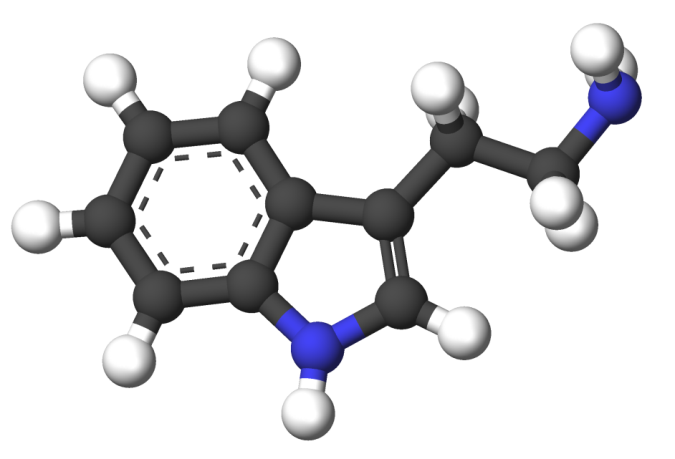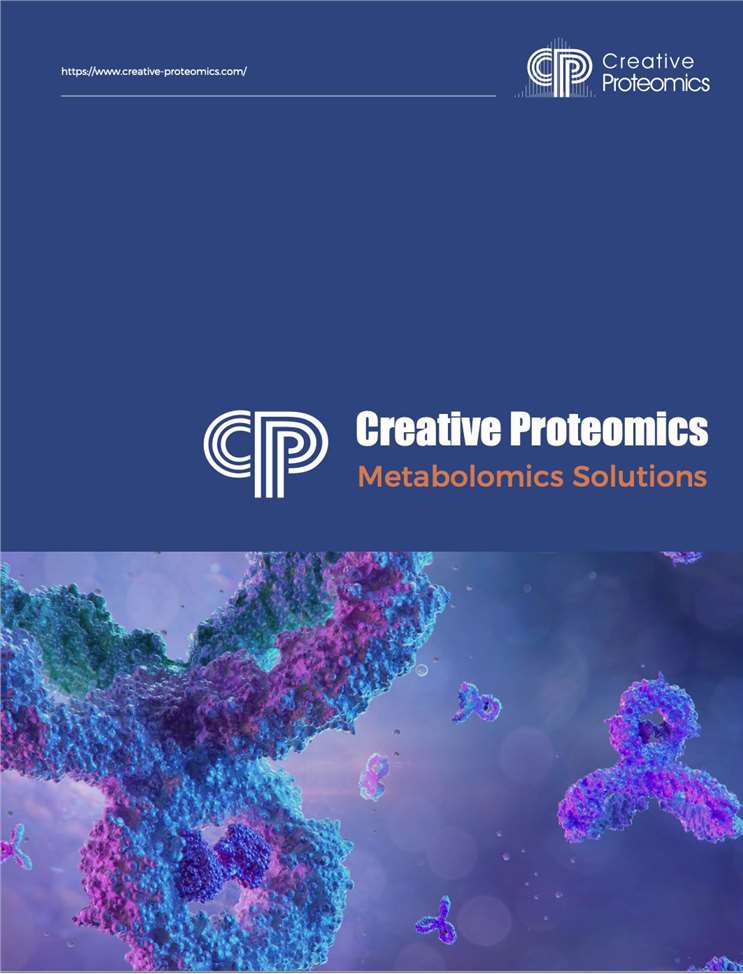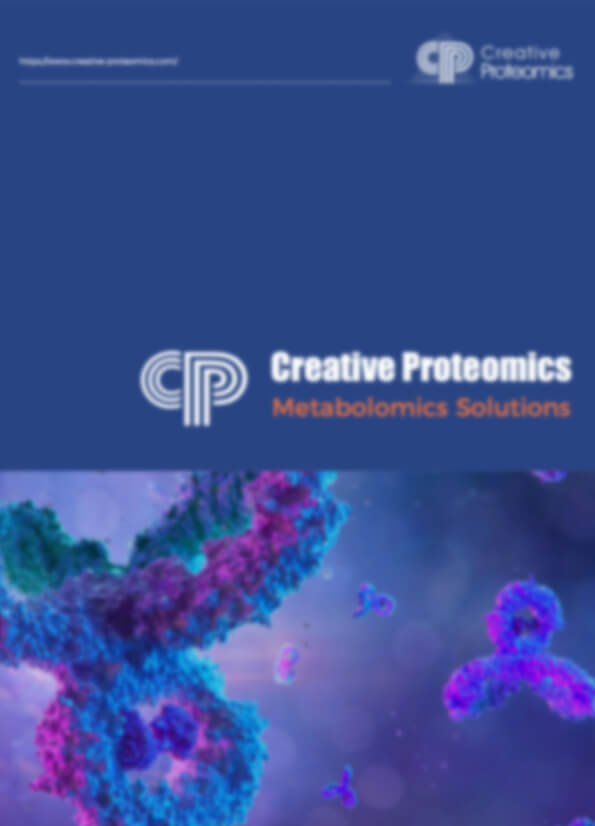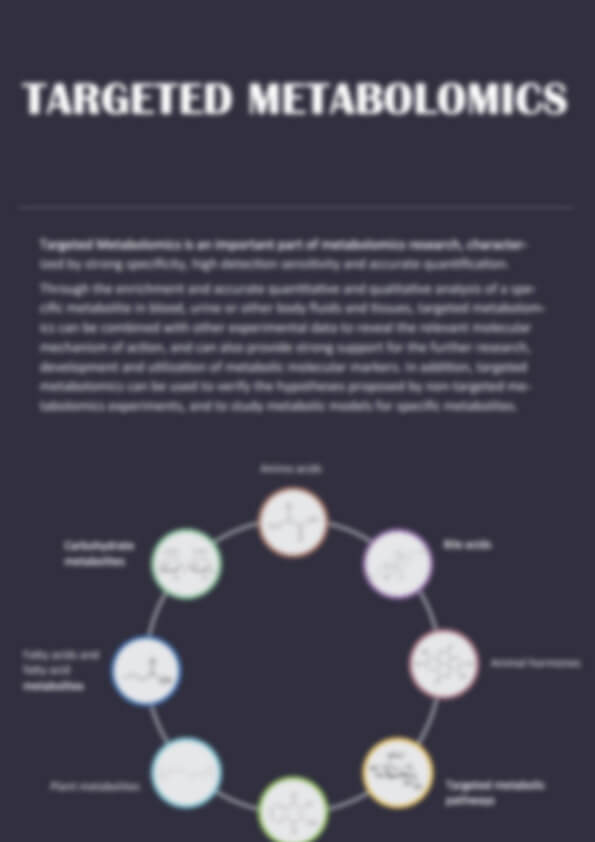Comprehensive Tryptamine Analysis with LC-MS
Submit Your Request Now
×- Introduction
- Methods
- Overview of Services
- Advantages
- Sample Requirements
- Publication
- Demo
What Is Tryptamine: A Key Biogenic Amine
Tryptamine is a naturally occurring monoamine alkaloid with an indole ring structure, closely related to the amino acid tryptophan. Found in trace amounts in mammalian brains—approximately 3.5 pmol/g in rat brain tissue—tryptamine is believed to function as a neuromodulator or neurotransmitter. Additionally, it serves as a structural component in various biologically active compounds, including neurotransmitters and psychedelic agents.
Beyond mammals, tryptamine is present in numerous plant species, where it plays a crucial role in metabolic pathways influencing growth and microbial interactions. It is also a potential intermediate in the biosynthesis of indole-3-acetic acid, a plant hormone essential for growth regulation. While tryptamine naturally occurs at low concentrations, higher levels are found in specific Acacia species.
However, due to its rapid metabolism by monoamine oxidases (MAO-A and MAO-B), tryptamine has a short half-life in vivo. It has also been identified as a noncompetitive inhibitor of serotonin N-acetyltransferase (SNAT), an enzyme involved in the conversion of serotonin to N-acetylserotonin, a precursor to melatonin in mosquitoes.

Tryptamine Quantification Methods
High-Precision Tryptamine Quantification with HPLC
At Creative Proteomics, we utilize high-performance liquid chromatography (HPLC) for precise quantification of tryptamine across various biological samples, including serum and tissue extracts. Our HPLC-based analysis platform employs precolumn derivatization with DNS-Cl to enhance detection sensitivity, ensuring highly accurate, reproducible, and reliable results for both in vitro and in vivo studies.
The Power of Chromatography in Biogenic Amine Analysis
Chromatography, first conceptualized by Russian-Polish botanist M. Tswett in 1906, has evolved into a cornerstone analytical technique in organic chemistry. Among various chromatographic methods, HPLC stands out for its ability to separate non-volatile, thermally unstable, and polar compounds with exceptional precision. Its broad application range makes it indispensable in both analytical and preparative chemistry, particularly for biogenic amine quantification and purification.
Advanced Tryptamine Analysis with High-Resolution Mass Spectrometry
At Creative Proteomics, we leverage cutting-edge high-performance liquid chromatography (HPLC) and mass spectrometry (MS) platforms to provide precise, high-sensitivity tryptamine analysis. Our services support research in neuroscience, pharmacology, and plant biochemistry, delivering quantitative accuracy for both trace-level detection and metabolic pathway exploration.
In addition to tryptamine analysis, our targeted polyamine metabolomics platform enables the detection of nine key polyamines, including:
Histamine, spermine, spermidine – Essential for cellular growth and function
Putrescine, cadaverine, ethylamine – Markers for microbial activity and metabolic health
Tyramine, tryptamine, octopamine – Neuromodulators involved in brain and plant signaling
Why Mass Spectrometry Outperforms Traditional Methods?
Compared to conventional techniques like immunoassays and chromatography, mass spectrometry (MS) offers unmatched sensitivity and specificity for tryptamine and polyamine detection.
Key Advantages of MS-Based Analysis
- Ultra-High Sensitivity & Specificity
Distinguishes structurally similar compounds (e.g., 5-MeO-DMT vs. DMT) using mass-to-charge ratio (m/z).
Detects trace-level analytes down to ng/L, ideal for low-abundance biomarkers.
- Multiplexed Detection in a Single Run
LC-MS/MS enables simultaneous analysis of dozens of tryptamine-related metabolites in one injection, dramatically improving throughput.
- Accurate Structural Characterization & Quantification
High-resolution mass spectrometry (HRMS) determines molecular formulas of unknown tryptamine derivatives, supporting novel psychoactive substance (NPS) discovery.
Isotope-labeled internal standards ensure absolute quantification, overcoming the semi-quantitative limitations of immunoassays.
Comprehensive Advantages of Our Metabolite Analysis Platform
1. Broad Application Across Biological Samples
Our platform is designed for versatility, accommodating a wide range of biological specimens. Key advantages include:
Extensive Pathway Coverage: Detects tryptophan and its derivatives, secondary metabolites, and interconnected metabolic pathways.
Comprehensive Target Lists: Encompasses diverse metabolic routes, meeting the analytical needs of most research clients.
Minimal Sample Requirements: Capable of analyzing micro-scale samples, even at the lowest submission thresholds.
Custom Experimental Design: Optimized pre-treatment protocols tailored to sample types, enhancing chromatographic and mass spectrometric performance for maximum sensitivity and accuracy.
2. High-Precision Detection & Analysis
Our platform leverages cutting-edge mass spectrometry technology for superior data reliability:
Powered by Ultra-Sensitive Qtrap 6500+: Delivers unmatched detection precision.
Strict Quality Control Measures: Ensures data consistency through rigorous validation protocols.
Stable Isotope Internal Standard Quantification: Enhances result accuracy by eliminating variability in measurements.
3. Comprehensive Post-Analysis Support
We provide a seamless research experience with industry-leading support services:
Rapid Turnaround: Obtain results faster with our streamlined workflow.
Expert R&D Assistance: Our scientific team ensures optimal data interpretation and application for your research.
Data Analysis
 Data analysis flow chart
Data analysis flow chart
Sample Requirements
| Sample type | Recommended sample size | Pre-treatment and storage |
|---|---|---|
| Tissue | 100-200 mg | Snap freezing in liquid nitrogen, stored at -80℃. |
| Urine | 200-500 μL | 5000×g 4℃ Centrifuge for 30-60min, remove supernatant, store at -80℃. |
| Serum/plasma | >100 μL | Collected serum/plasma, snap freezing in liquid nitrogen, stored at -80℃. |
| Cerebrospinal fluid, amniotic fluid, bile and other body fluids | >200 μL | 4℃ Centrifuge for 10min, (or filter using 0.22μm membrane), remove supernatant and store at -80℃. |
| Suspension cells | >1*107 | Centrifuge and collect cells after liquid nitrogen snap freezing and store at -80℃. |
| Walled cells | >1*107 | Cultured walled cells are stored in 1.5ml centrifuge tubes, snap freezing in liquid nitrogen and stored at -80℃. |
| Cell supernatant | >2 mL | centrifuge at 4℃ for 3 minutes, take the supernatant and store at -80℃. |
Publications
Here are some our targeted metabolomics publications from our clients:

- Polyamine metabolism impacts T cell dysfunction in the oral mucosa of people living with HIV. 2023. https://doi.org/10.1038/s41467-023-36163-2
- Overexpression of maize ZmLOX6 in Arabidopsis thaliana enhances damage-induced pentyl leaf volatile emissions that affect plant growth and interaction with aphids. 2023. https://doi.org/10.1093/jxb/erac522
- Living in extreme environments: a photosynthetic and desiccation stress tolerance trade-off story, but not for everyone. 2023. https://doi.org/10.22541/au.168311184.42382633/v2
- Fatty Acid and Antioxidant Profile of Eggs from Pasture-Raised Hens Fed a Corn- and Soy-Free Diet and Supplemented with Grass-Fed Beef Suet and Liver. 2022. https://doi.org/10.3390/foods11213404
Demo
Figures come from (Li, Y.et.al, Sci Rep,2023)
Partner with Creative Proteomics for Advanced Tryptamine Analysis
With our expertise in high-sensitivity MS detection, comprehensive metabolomic profiling, and state-of-the-art analytical platforms, we provide unparalleled accuracy, reproducibility, and efficiency. Contact us today to enhance your tryptamine and polyamine research with the power of mass spectrometry.
References
- Woodcock EA, Lambert KA, Du XJ. Ins(1,4,5)P3 during myocardial ischemia and its relationship to the development of arrhythmias. J Mol Cell Cardiol. 1996 Oct;28(10):2129-38. doi: 10.1006/jmcc.1996.0205.1996.0205. PMID: 8930808.
- Guo C, Xie S, Chi Z, Zhang J, Liu Y, Zhang L, Zheng M, Zhang X, Xia D, Ke Y, Lu L, Wang D. Bile Acids Control Inflammation and Metabolic Disorder through Inhibition of NLRP3 Inflammasome. Immunity. 2016 Oct 18;45(4):802-816. doi: 10.1016/j.immuni.2016.09.008. Epub 2016 Sep 28. Erratum in: Immunity. 2016 Oct 18;45(4):944. doi: 10.1016/j.immuni.2016.09.008. 2016.10.009. PMID: 27692610.
- Jena, P. K., Sheng, L., Liu, H., Kalanetra, K. M., Mirsoian, A., Murphy, W. J., French, S. W., Krishnan, V. V., Mills, D. A., & Wan, Y. (2017). Western Diet–Induced Dysbiosis in Farnesoid X Receptor Knockout Mice Causes Persistent Hepatic Inflammation after Antibiotic Treatment. American Journal of Pathology. https://doi.org/10.1016/j.ajpath.2017.04.019
















